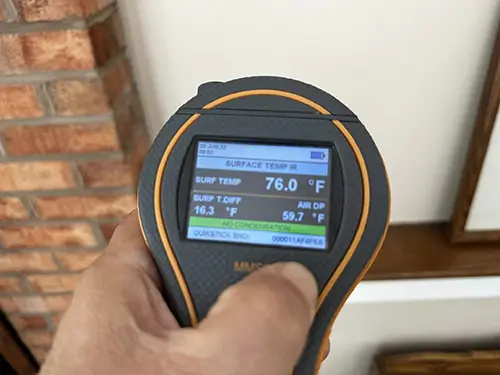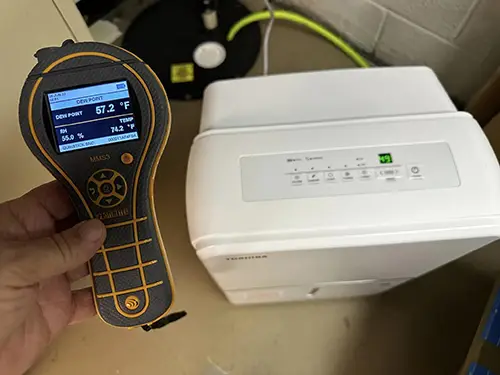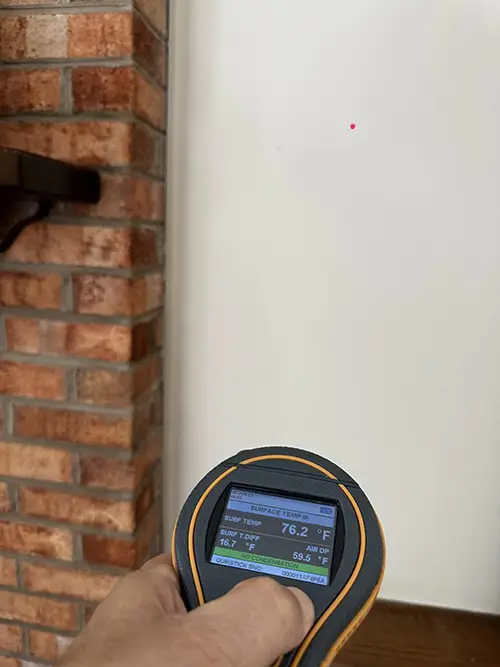 Mold Prevention in Buildings
Mold Prevention in Buildings
Controlling moisture is one of the keys to mold prevention in your home or commercial building. This can result from leaks, humidity, evaporation, and/or condensation. High levels of water vapor in the air can also contribute to high humidity, a musty odor, and mold growth on certain surfaces and materials. First, you will need to identify the source of the water or moisture, which could include moisture intrusion from exterior building envelope leaks in walls, roofing, and floors from below through the floors. Other common sources of moisture may include plumbing leaks as well as from cooking, bathing, the occupants, plants, and several other potential sources.
Another harder-to-identify source may include vapor diffusion through walls, floor, and ceiling assemblies. Water vapor diffusion can be one of the most difficult to identify and locate the source as it is the movement of water vapor through vapor-permeable materials such as wood, drywall, and even concrete. Some of these materials are considered less permeable depending on various factors. Vapor diffusion can also happen through solid materials such as concrete, even when the material has no penetration or voids. One example of vapor diffusion occurs when a building material such as drywall is installed on a framed wall assembly that separates two zones, the indoor air from the exterior. Dampness or moisture in the air will diffuse through the drywall if one side is damp and the other side of the drywall is dry. For example, a poorly insulated and poorly sealed wall assembly can allow for a dew point within the wall when the exterior is damp and humid, and the moisture can pass through the permeable wall surfaces and mix with cooler air in the home’s interior. In these cases, areas may be prone to mold growth on the back of the drywall and the wall framing. The home or building owner may often smell mold or experience mold-related symptoms. A mold-in-air test does not detect elevated levels as the mold may be inside the wall assembly, while someone with hypersensitivity to certain molds may smell, feel, or detect the presence of mold.
Depending on the severity of the moisture and the source, some common solutions may include installing dehumidifiers in areas of the building, improving insulation, sealing a floor slab, and bringing in the fresh air with an HRV can be one of the keys to helping control humidity and the risk of condensation. If you have a mold concern, you should contact a qualified mold abatement company. Once the source has been identified, mold abatement may include the removal of all latent spores that have settled on surfaces throughout the house from a prior water event. These may include carpets, furnishings, clothing, personal items, etc. Removal or cleaning of certain mold-contaminated materials may be needed, especially ones that are not critical to the house or occupant. Containment of contaminated areas and sealing the HVAC system may be needed to prevent reintroduction during the abatement process. Having the air scrubbed may also be necessary to pull any airborne contaminants from the air to prevent them from settling on surfaces. Ensure the mold abatement company shows you the protocol they are using for the abatement, including that the source was corrected and that post-abatement samples were taken to verify that the mold levels are present.
After abatement, you should also keep an eye on the conditions of the building; the dehumidifiers remain operational and be ready to act if there is a reoccurrence. If furnishings and carpets are removed, these could reintroduce dust and spores into the environment, and additional testing may be needed. Removal of carpet, fabric-covered furnishings, unneeded shelving, cardboard storage containers, or other non-essential contaminated items may help to lower the levels and remove latent spores that were never removed during a prior water event.
 Remember, control the moisture! I hope this helps whoever reads this if you have any mold-related concerns.
Remember, control the moisture! I hope this helps whoever reads this if you have any mold-related concerns.
Showalter Property Consultants can help analyze, diagnose, and offer solutions if you have a mold issue or some health-related concerns in your home.
Call today!
Stephen Lee Showalter, NACHI® CMI, ASHI ACI
Home Inspector, Environmental Consultant
Maryland State Home Inspector License #29634
ASHI ACI Certified Membership
NACHI® CMI Certified Master Inspector
InterNACHI® CPI Certified Membership
Certified Commercial Property Inspector Association
FAA Certified UAS Pilot #3987636
CRT Certified Residential Thermographer
Showalter Property Consultants providing quality home inspections and environmental testing throughout Maryland since 1988.
For a quality mold investigation and testing contact us on schedule online.
Back to Maryland Home Inspection Blog



